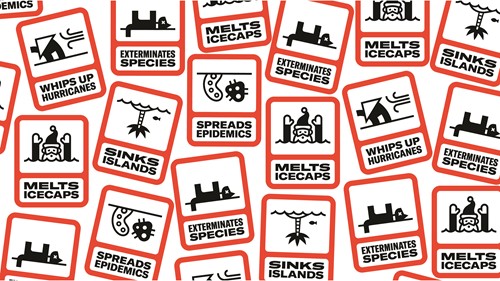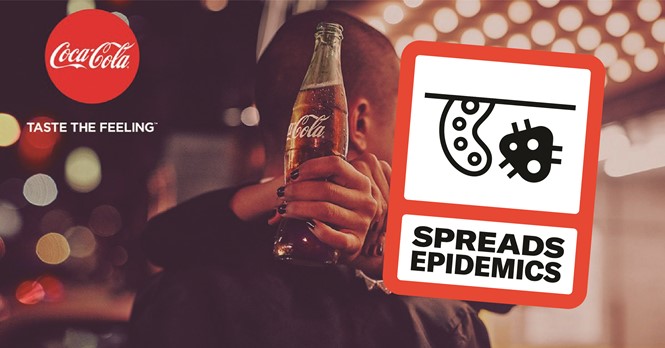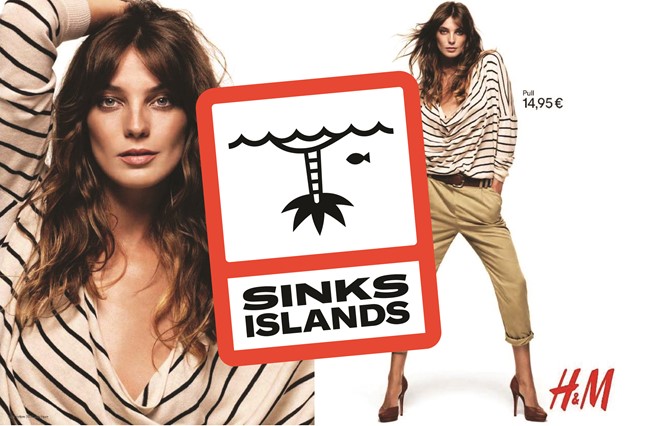Sustainable futures: Do the Green Thing
For global brand consultancy Pentagram, sustainability has become a core practice largely due to the efforts of partner Naresh Ramchandani, whose charity Do the Green Thing campaigns for more environmentally aware branding and advertising practices. Amy Sandys reports
Think about weddings. What’s the first thing that springs to mind? A church perhaps, or another place of worship; flowers, dresses, suits, food and drink are probably there, too. What the average wedding attendee might not consider, however, are the 14.5 tonnes of carbon dioxide emitted from many of the 250,000 marriage ceremonies that occur in Britain each year.
This fact, says Naresh Ramchandani, partner at global branding consultancy Pentagram and founder of sustainability charity Do the Green Thing, is shocking in its scale. Yet it doesn’t prevent the advertising and marketing industry from demonstrating the apparent need for excess to every future bride and groom. “It’s a carbon splurge, it’s a big environmental splurge and it’s excused with, ‘oh it’s only once,’” says Ramchandani. “But weddings happen, so we’ve been asking some interesting questions about how you can have a more sustainable wedding and also make it as loving and very original.” And although weddings barely scratch the surface, this statement is more or less at the core of Do the Green Thing’s aspirations. The effect the charity hopes its campaigns will have on brands, advertisers and companies working in the consumer product space is to shock, to inform – and ultimately, to change minds.
Now over a decade old, Do the Green Thing was started by Ramchandani and his colleague and friend, Andy Hobsbawm – currently CMO of the Alizeti Consortium of Racehorse Owners – to draw attention to the impact of excess on the planet’s future generations. “We’re always looking for interesting issues that are part of everyday life, where you can say, look at the consumption trap we’re in and we help you break out of that,” says Ramchandani. But rather than following the tried and tested campaign strategy of telling customer what they can’t do, explains Ramchandani, the focus of Do the Green Thing is on what brands and customer can do.
“We thought, what can we do for the generation after us, for our children or generations to come? Because our generation is basically screwing up the planet and we’ve got to try and do something, simple as that,” Ramchandani says. “We thought, isn’t there space for something that can tell you all the things you could do, and enjoy doing? That was our angle at Do the Green Thing – putting desirability into sustainability.”
And, while ‘putting desirability into sustainability’ may seem like an ambitious goal, Do the Green Thing has an ambitious outlook. Separate to, but supported by, Pentagram, the digital-first charity invites brand and communications experts to discuss how the industry can move towards a more environmentally friendly future. Campaigns are core to Do the Green Thing’s work; most recently, Ramchandani has welcomed global brand expert Paula Schwer to design warning labels for brands. This choice of campaign strategy and design, says Ramchandani, has brought Do the Green Thing’s true purpose alive.
He says, “It’s about asking these awkward questions of the advertising industry and the world of brands and the world of promotion, and saying, is it ok to advertise overconsumption when that means a bad result for generations coming after us? And the answer’s no,
right? But we thought about it no – we haven’t seen anyone say that.”
Regarding the relationship between Do the Green Thing and Pentagram, the former’s almost unblinkered focus on promoting ethical practice throughout the creative industries has a positive effect on the brand agency. Using Pentagram’s global presence, Do the Green Thing promotes its ethical editorials via the agency’s social channels. In turn, the charity ensures Pentagram’s projects represent a wider social and environmental purpose. “The quid pro quo is we can all explore these issues together and figure out what to do about them,” says Ramchandani. “If Do the Green Thing does perhaps go further ahead in the thinking then that’s very healthy for Pentagram. Wherever possible we do things that goes with the Do the Green Thing agenda.”
Nice ad, shame about the planet

Naresh Ramchandani, partner, Pentagram
At the turn of the century, after a 50 year series of pushes by doctors, researchers, campaigners and governments, tobacco advertising was deemed to be against the interests of society and banned in many markets around the world.
Free to advertise their little addictive sticks cigarettes were unstoppable. In 1974, 46% of the UK smoked. Today, with the Marlboro Man well and truly buried in a machismo desert and B&H’s abstract gold tropes confined to the surrealist dustbin, that figure is less than 16%.
Advertising – and more importantly, the ban of advertising – worked.
Now, 15 years after we stubbed out tobacco ads, we’re examining the advertising rights of other products that harm society such as alcohol and junk food. But if we’re looking for advertising that does wide-ranging damage, aren’t we missing the biggest offenders of all: the products that contribute to climate change?
Using the same logic that led to the cigarette advertising ban, how can we let products publicly promote themselves when, underneath their bright and shiny promises of instant style, speed, taste and pleasure lies the much darker promise of long term hardship?
Put simply, we can’t. Although we can’t ignore the challenges.
A body will need to ratify which products can advertise and which will be silenced, and that process will be hotly contested. Legislation will need to be channel-wise, and mute all the complex ways in which brands promote themselves, and that’s never happened before. And the advertising industry will need change.
It’s not easy to make a living by insisting on work that’s, at worst, climate-change neutral. To look at every new project through nicotine-tinted glasses, ready to see it – and reject it – as a 21st century cigarette. But if we look beyond advertising’s short-sightedness, we’ll realise it’s something that has to be done.














